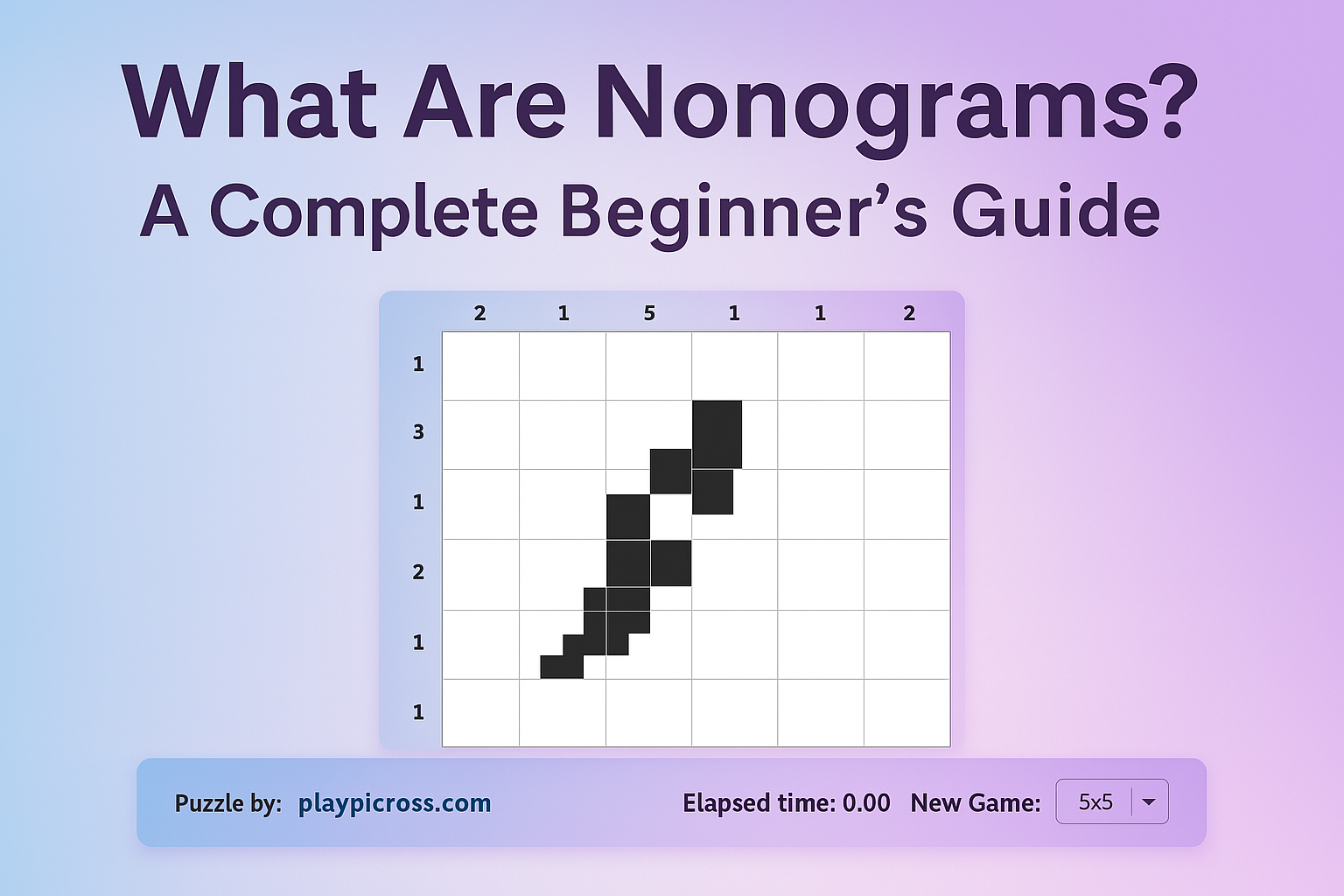
Have you ever stumbled upon a grid-based puzzle that slowly reveals a hidden image as you fill in squares with logic? That's a nonogram. Also known as picture cross, griddlers, or hanjie, nonograms are addictive logic puzzles that blend strategy, patience, and a satisfying visual payoff. In this guide, we'll break down exactly what a nonogram is, how to play, and why it's worth your time.
Whether you're a puzzle lover or simply looking for a new way to relax while keeping your brain active, understanding the appeal of nonogram puzzles could be your next favorite hobby. Let's dive into the origins, mechanics, and joy behind this unique puzzle format.
A nonogram is a type of logic puzzle that consists of a rectangular grid of squares, with numerical clues aligned along the rows and columns. The goal is to determine which squares should be filled to eventually uncover a hidden pixel-style image. The puzzle challenges players to use logic and deduction rather than guesswork to complete it successfully.
The numbers provided are not random—they represent sequences of filled squares. For example, a clue of "5 2" in a row means there will be a group of five filled cells, followed by at least one blank cell, and then a group of two filled cells. However, the placement of these blocks is not initially clear, which is where your reasoning skills come into play.
This type of picture logic puzzle requires no prior math skills, just patience and logical thinking. With each square you fill (or exclude), you get closer to completing a hidden illustration—one of the most rewarding parts of solving nonograms.
Learning how to play a nonogram puzzle can seem tricky at first, but once you understand the system behind it, you'll be hooked. The basic principle is to use the clues to determine which squares to fill in. There's no guessing—just methodical analysis and deduction.
Start by identifying rows or columns where the clues take up the full width. For example, in a 10x10 grid, a row with a clue "10" clearly means all 10 cells are filled. Rows like "9" or "8" will also have very limited positions where the blocks can go, making them a great starting point. Use this logic to mark what you're sure of.
As you work through the puzzle, use Xs or dots to mark empty squares. This visual aid helps eliminate possibilities and focus your attention. As more clues align, you'll unlock new sections. The beauty of the nonogram puzzle is in the slow unveiling of the image—like solving a mystery one square at a time.
The golden rule in any nonogram is: never guess. Every move should be based on logic. If the clue says "3 2," you cannot assume where the 3 and the 2 go without testing all possible placements and cross-checking with intersecting clues. A single mistake can throw off your entire puzzle.
Always work on both axes—rows and columns—simultaneously. This cross-referencing is key to advancing through difficult puzzles. The challenge scales with larger grids and more complex clue patterns, but the satisfaction also grows with each completed puzzle.
If you're stuck, revisit previously marked rows and columns. New information often helps solve older sections. Use "edge logic," focusing on rows or columns with clues that are long enough to touch both edges of the grid. This tactic is especially useful in mid-size puzzles.
Don't hesitate to lightly test possibilities using pencil marks or digital tools—just avoid finalizing moves until you're sure. As you practice, you'll naturally develop intuition for patterns and improve your speed and accuracy.
nonograms combine logic, art, and a small sense of discovery in each puzzle. Unlike crosswords or sudoku, which test word knowledge or number patterns, nonogram puzzles give you a visual result—a picture that forms before your eyes as you solve.
One of the reasons they're so addictive is the perfect blend of challenge and reward. Completing a particularly difficult grid feels like finishing a mini artwork. That dopamine hit—plus the relaxing focus required—makes them popular for players seeking a mental escape without screen overload.
They're also versatile: you can solve them on paper, in mobile apps, or right in your browser. For example, our curated picross puzzles offer an easy entry point with a smooth learning curve and engaging visual rewards.
Now that you understand what a nonogram is and how it works, it's time to give one a try. Our online collection features puzzles for all levels—perfect if you're new or just want a quick brain teaser during the day. No need to download anything—just click and play.
If you're already a fan of logic-based games like picross, you'll love the satisfaction of completing a nonogram puzzle from scratch. You don't just solve it—you reveal something beautiful.
Yes, nonograms and picross refer to the same type of logic puzzle. Both involve filling squares in a grid based on numerical clues to reveal a hidden image. The main difference is that "Picross" is a branded term popularized by Nintendo, while "nonogram" is the generic name used globally.
Whether you call them nonograms, picross, hanjie, or griddlers, they all offer the same engaging and rewarding puzzle experience. The core logic and rules remain the same across all versions.
Start now and uncover your first hidden picture with a nonogram. It's more than just a puzzle—it's a moment of focus, creativity, and fun all in one.